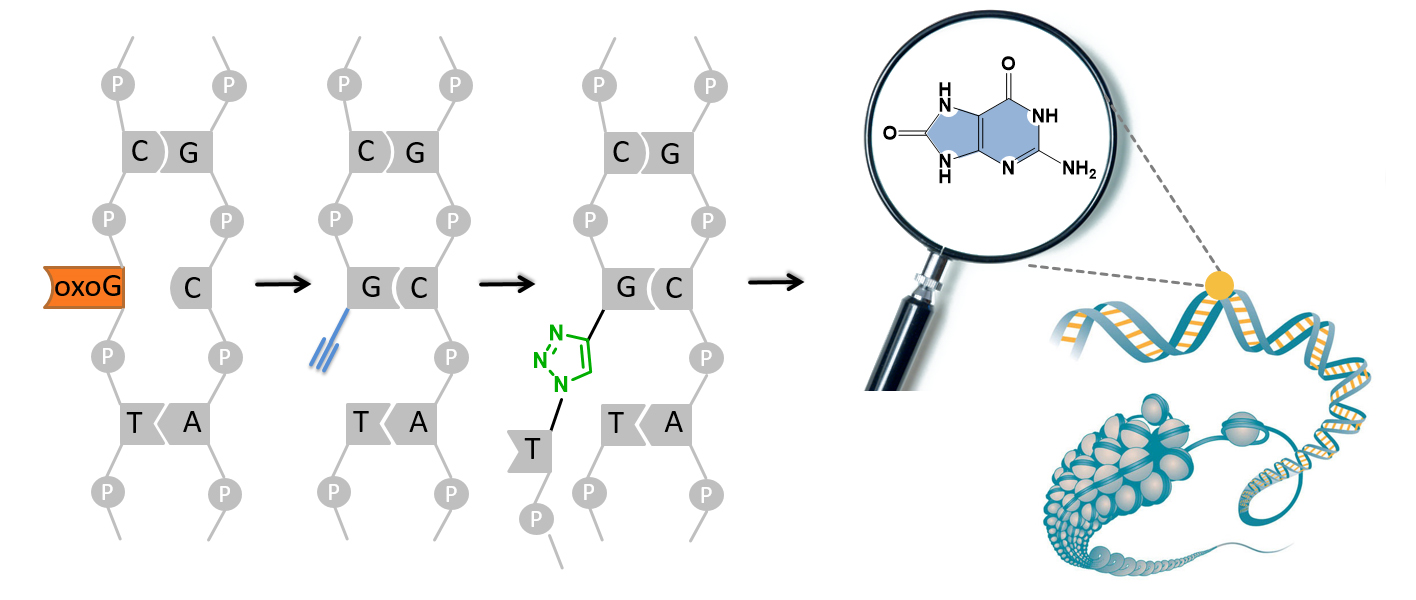Innovative sequencing methods for DNA oxidation damage
Oxidative damage to the genome is an important and complex process wherein the locations and persistence of sites of oxidation in the genome may be predictive of adverse outcomes such as mutation and cancer. With a wealth of new information available concerning genome-wide mutational landscapes of human cancer, there is an urgent need and great promise in understanding factors that influence the persistence of oxidation in the genome and to be able to predict mutation signatures from persistent DNA oxidation. Emerging strategies to identify molecular initiating events giving rise to mutation signatures have not focused on DNA damage sequencing or oxidative damage. The recent click-code-seq method for mapping DNA oxidation at single-nucleotide resolution developed in our lab provides an exciting new possibility to understand on a genome-wide level the relationship between oxidative damage and its adverse consequences. Using this approach, distinct patterns of oxidative damage in a variety of different genomic elements have been discovered.
Representative Publications
Cécile Mingard, Junzhou Wu, Maureen McKeague, Shana J. Sturla. Next-generation DNA damage sequencing. Chem. Soc. Rev. 2020, 49, 7354-7377
external page https://pubs.rsc.org/en/content/articlehtml/2020/cs/d0cs00647e
Junzhou Wu, Shana J. Sturla, Cynthia J. Burrows, and Aaron M. Fleming. Impact of DNA oxidation on toxicology: from quantification to genomics. Chem. Res. Toxicol., 2019, 32, 345
external page https://pubs.acs.org/doi/10.1021/acs.chemrestox.9b00046
Junzhou Wu, Maureen McKeague, Shana J. Sutrla. Nucleotide-resolution genome-wide mapping of oxidative DNA damage by click-code-seq. J. Am. Chem. Soc. 2018, 140, 9783 (Highlighted in CHIMA 2018, 72, No. 11, 815)
external page https://pubs.acs.org/doi/10.1021/jacs.8b03715
Funding

